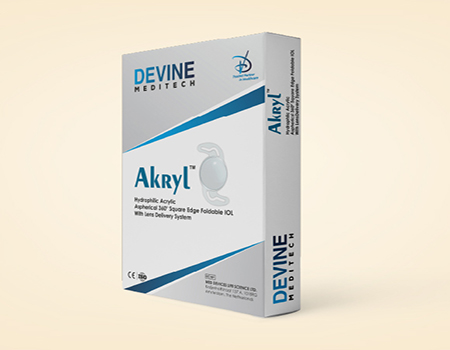
Hydrophilic IOLs unfold easily to take up their final position inside the eye. They can be rotated or explanted more readily if necessary since they are more flexible than hydrophobic acrylic IOLs. Surgeons now generally use IOLs with advanced technology with more confidence since problems can be managed more securely.
If you are looking for intraocular lens manufacturers in India, you can put your search to rest since Devine Meditech is the best place to go. It is one of the best places in India to manufacture and distribute intraocular lenses, and it offers a wide range of products to meet the different demands of patients.
1. Resident Training: As appropriately haptically engineered, hydrophilic acrylic IOLs, despite their tremendous flexibility, resist displacement or rotation as the capsular bag compresses. Because of the hydrophilic material's enhanced resistance to fold marks and forceps damage, these lenses are typically recommended as a great choice for resident training.
2. Flexibility: The flexibility and compressibility of hydrophilic IOLs make them an excellent choice for microincision cataract surgery, lowering the possibility of medically generated astigmatism and improving the predictability of post-operative unaided visual performance.
3. Biocompatibility: Additionally, individuals with diabetes or uveitic disease benefit from the high biocompatibility of hydrophilic acrylic IOLs. These people have "quieter" eyes and excellent visual outcomes after installing hydrophilic acrylic IOLs.
4. Lowered Glare: Because they have a larger ABBE number than hydrophobic IOLs, hydrophilic IOLs attach more readily and show less light dispersion, which lowers glare and chromatic aberration.
5. Less Possibility of Glistenings: Compared to hydrophobic acrylic IOLs, hydrophilic acrylic IOLs are far less likely to develop glistenings. Dysphotopsia and decreased contrast sensitivity are two visual deficits that might result from the hydrophobic acrylic IOLs' fluid micro vacuoles scattering light.
The suggestion that hydrophilic acrylic IOLs be removed from the cataract surgeon's toolbox was sparked by reports of calcification of these IOLs in patients undergoing procedures that involve the intracameral implantation of gas or air, such as Descemet membrane vascular keratoplasty or Descemet stripping (programmed) endothelial keratoplasty.
Advice for surgeons regarding the application of hydrophilic IOL Because surgeons cannot predict who may need keratoplasty or pars plana vitrectomy treatments in the future, it was recommended that they should simply stop using hydrophilic IOLs. This suggestion is opposed by some surgeons who think the opacification issue has been overstated. The perfect IOL is still being developed. However, given the advantages of hydrophilic IOLs, a less drastic approach than a complete ban may be possible. Because "we have to deal with a risk of opacification," certain more susceptible eyes may benefit from adaptive techniques.
Novel techniques have been developed to shield IOLs from exposure to gases or air that may increase the risk of excessive calcium accumulation. Before being exposed to air or gas, the anterior chamber should be cleaned with saline and kept in situ for at least eight minutes. The presence of saline removes excess calcium ions from the hydrophilic IOL by passive diffusion.